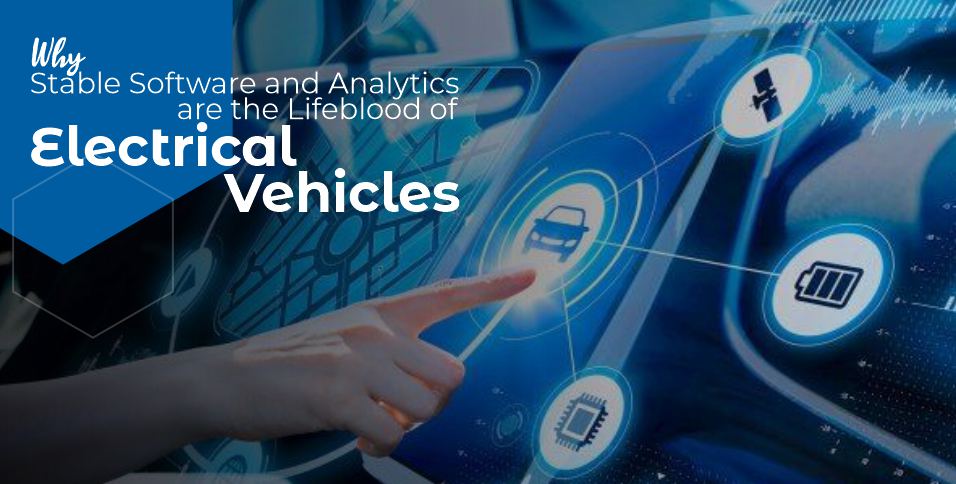The use of IoT devices, especially social media, has exploded the field of data analytics for business intelligence over the past decade. These applications of business intelligence have not been limited to handheld devices alone. By connecting the sensors of internal combustion vehicles to the internet, they have also essentially become IoT devices. Providing valuable vehicle information to drivers and fleet managers which can be processed into qualitative analytics data.
With the introduction of electric vehicles, software monitoring and analytic data have moved to the center stage in a big way. Thoroughly designed OEM software has become the lifeblood of BEVs. While improved analytic capabilities can be supplied by a comprehensive Electric Vehicle OEM, some basic principles need to be adhered to, to make it reliable and effective.
Electrical vehicle OEMs are built on a three-pillar foundation that describes the requirements and functionality that BEVs need to have.
Cyber Security
In comparison with ICE OEMs, the case for cyber security for Electric Vehicle OEMs is much different since sensor-based analytics are at the heart of the vehicle’s operation. The level of cyber security, therefore, cannot be negotiated, as defined in the UNECE WP.29 R155 regulation. The use of narrow AI in vehicles falls under this category.
Fully electric vehicles face some unique risks that OEMs must address, in addition to the cyber risks associated with network-aware vehicles. Because these vehicles are entirely reliant on charging stations, they provide a single weak point that can, and has, been exposed by threat actors. This implies that the vehicle owner can mitigate the threats of a physical breach and consequential theft of the vehicle by avoiding high-risk situations.
OEMs need to ensure that their software addresses the unique risks associated with electric vehicles in this modern age adhering to international road vehicle standards such as the ISO/SAE 21434:2021, for example. Due to their complete dependence on software, electrical vehicles are more similar to computers than internal combustion vehicles, posing a higher risk of security breaches.
Regulatory Compliance
When regulatory compliance is brought into any conversation, the first thought is always the protection of private, personally identifiable client information. This is necessary for electrical vehicles since market trends in other industries indicate that the collection of data from IoT devices only increases over time.
Owners would expect that they are effectively protected from potential data leaks. OEMs can employ mechanisms prescribed by some industry standards in compliance, such as the GDPR, for example. Through data obfuscation and encryption, personal data can be anonymized.
Electrical vehicle OEMs need to adhere to international standards as far as incidents go too. The incidents, such as crash reporting and security breach reporting are part of the drive for regulatory compliance standardization required by the electrical vehicle industry.
Vehicle enhancements
Electrical vehicles have a special requirement where, since they are entirely dependent on the lifespan of their batteries, power usage optimization is crucial. OEMs need to ensure that the monitoring software provides accurate battery data analysis to the driver and aftermarket repair centers. Usage-based metrics should be included in the battery analytics, such as charging cycles, engine performance, and driver-based trends, for example.
Accurate analytics need to be able to accurately predict failures resulting from battery-related factors. This allows OEMs to build predictive maintenance schedules into their product, enhancing the overall customer experience and improving the public opinion of the OEM.
Commercial adoption of electrical vehicles is on the rise too. The range of vehicles includes service and delivery vehicles, utility vehicles, and public transportation vehicles. Vehicle enhancements will always be part of the value proposition for OEMs. Improvements to the driver experience and to the longevity of electric vehicles.
In Conclusion,
Stable OEM software paired with powerful, relevant analytics is the lifeblood of electrical vehicles today. Apart from the need for quality physical parts, software plays the most key role when it comes to electric vehicles. The quality of the end user’s experience will ultimately determine the longevity of the product, even if it cannot be entirely seen by the end user. OEMs can increase their technology adoption rates by proving their electrical vehicles are resilient.
Also Read: Hyundai Mobis and KT Corporation came together to Develop Connected Vehicles















